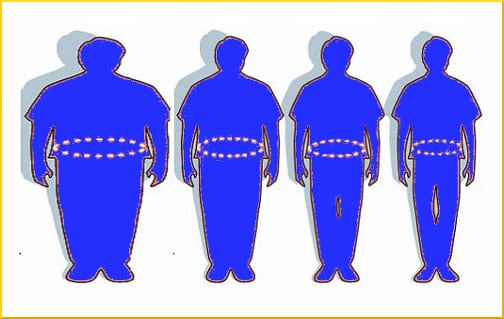
Childhood Obesity News has spoken before about the consequences of major weight loss, and we’re doing it again. The reason is definitely not to discourage anyone from making the commitment to lose weight for health. The purpose is to point out the wisdom of not becoming overweight in the first place. A child who never becomes overweight is far less likely to become an obese teen or a morbidly obese adult, and will never face the possibility of dealing with what happens after a major shedding of pounds.
The subject for today and tomorrow is a lengthy piece written by Ed Cara for Vocativ.com, titled “The Dark Side of Weight Loss Surgery” that addresses such problems as these:
Weight loss surgery blogs and message forums are littered with tales of those taken aback by the emotional hurdles of life after surgery, such as a man who struggled with feelings of sadness, self-pity, and anger five months post-surgery, or a young woman whose post-surgery pain worsened her depression, even as she hoped to lose the last elusive twenty pounds needed to reach her ideal weight.
Causing a large portion of the body to disappear is a noteworthy accomplishment, and several things can happen to anyone who does it, by whatever means. A certain amount of readjustment will always be necessary, no matter how the person gets to that point.
Buying new stuff to wear is the least of the newly-reduced person’s worries. Most obese people are equipped with sweat pants and other capacious and forgiving garments. These can continue to be worn through several successive changes in girth. (If you hold off for a while before buying skinnier clothes, the contrast will be more apparent and your friends will be more awestruck.) Perfectly acceptable used clothes can be found at the Salvation Army store, Goodwill, ARC, faith-based redistribution centers, etc.
A professional who is expected to appear in business-appropriate garb will have a harder time keeping the wardrobe up to standard. Office clothes cost more. On the other hand, that person can more likely afford it. But even so, there are clothing resale stores and consignment shops with very high standards and reasonable prices. The point is, in America, most people have access to decent used clothes, as a temporary fix.
More difficult and expensive to cope with is the body encumbered with skin that is leftover and excessive because what used to hold it up isn’t there any more. The beloved celebrity Carnie Wilson lost 150 pounds and allowed the story to be told of how she had flaps of loose skin surgically removed.
And, of course, any formerly fat person has a whole lot of learning to do, about handling social situations. There will be doubters, tempters, trolls, and people who, despite the evidence of success right before their very eyes, feel compelled to tell you that you’re doing it wrong.
A bleak future
Those obstacles can arise for people who lose a large amount of weight by whatever means they have chosen. But there are far worse things than baggy clothes or even saggy skin, and they mainly seem to happen to patients who have undergone bariatric surgery. No matter how much the technique advances, one thing doesn’t change. Surgery is by definition invasive, and invasion is generally considered the sub-optimal choice.
Or is it? Formerly, only the truly obese were proposed as candidates for surgical intervention. But the bar continues to lower, to include teens who are overweight but not yet obese, and even younger kids. Many health professionals are concerned about this trend. A goodly number of doctors maintain that the priority should be obesity prevention, and surgery should remain the last resort.
Your responses and feedback are welcome!
Source: “The Dark Side Of Weight Loss Surgery,” Vocativ.com, 01/24/17
Photo credit: Mike Licht, NotionsCapital.com via Visualhunt/ CC BY

 FAQs and Media Requests:
FAQs and Media Requests: 











